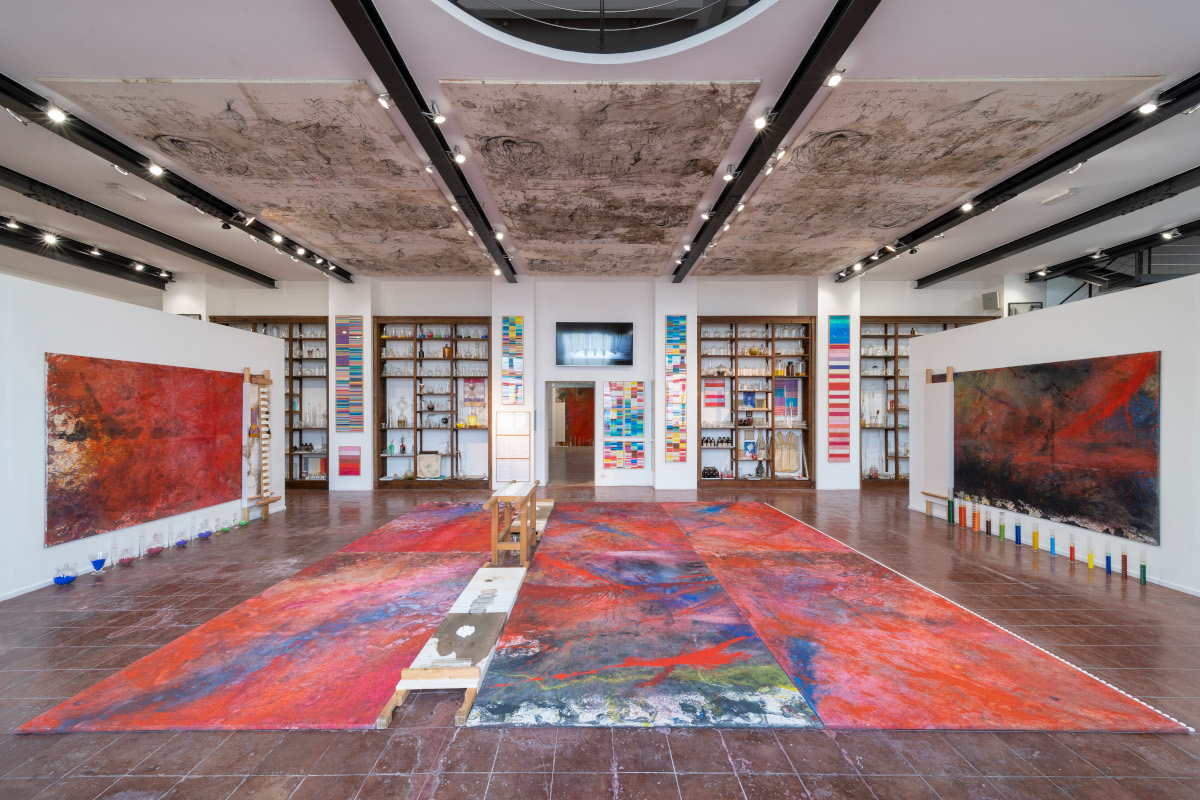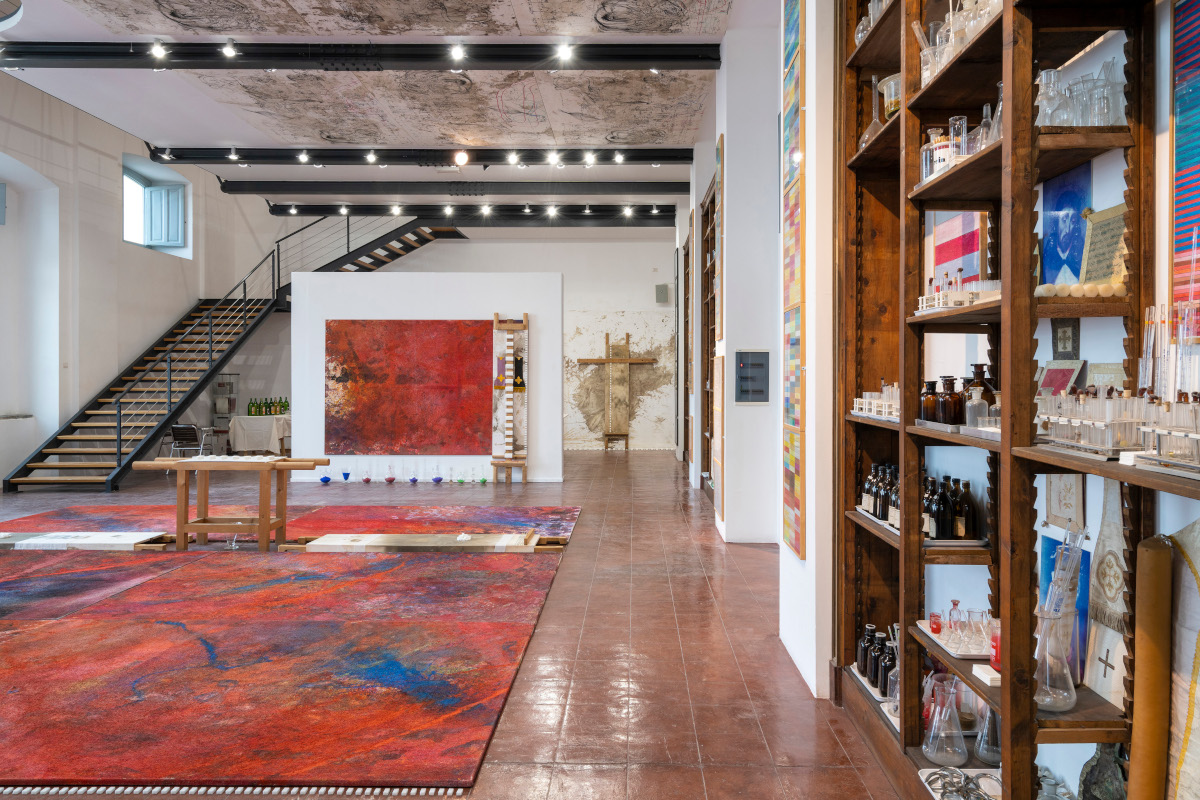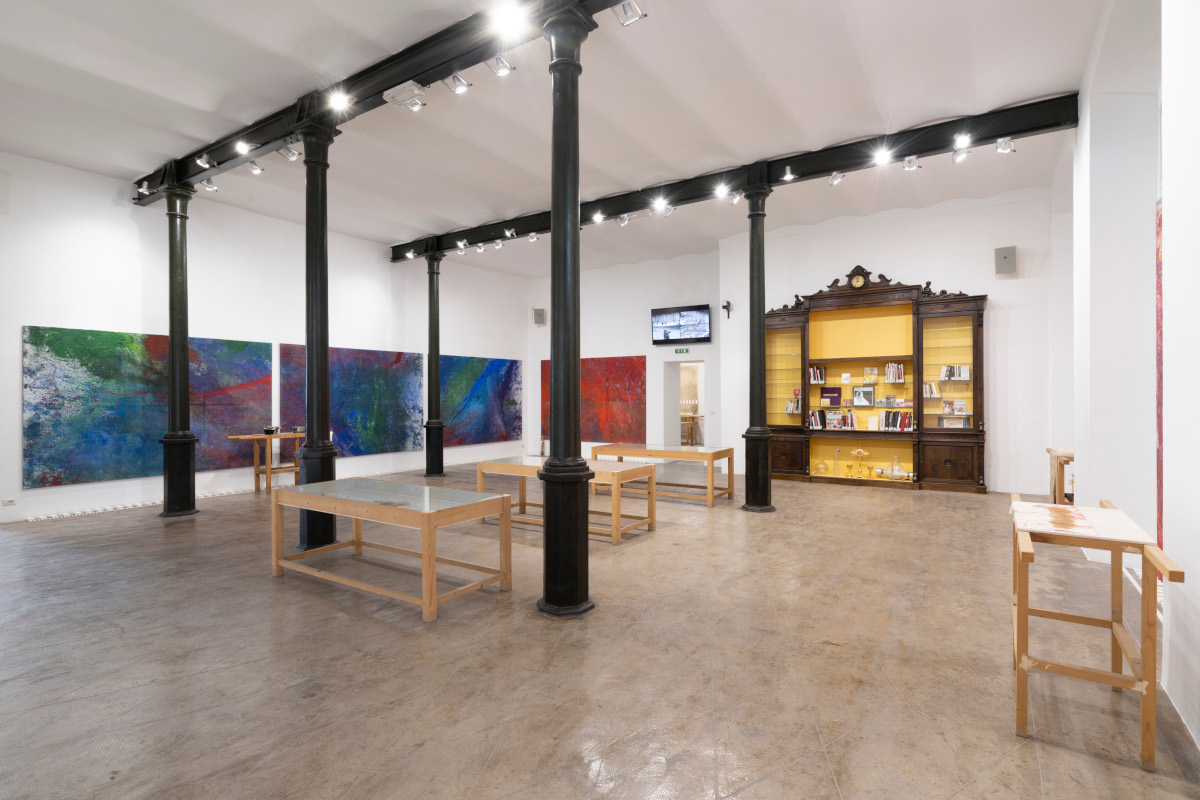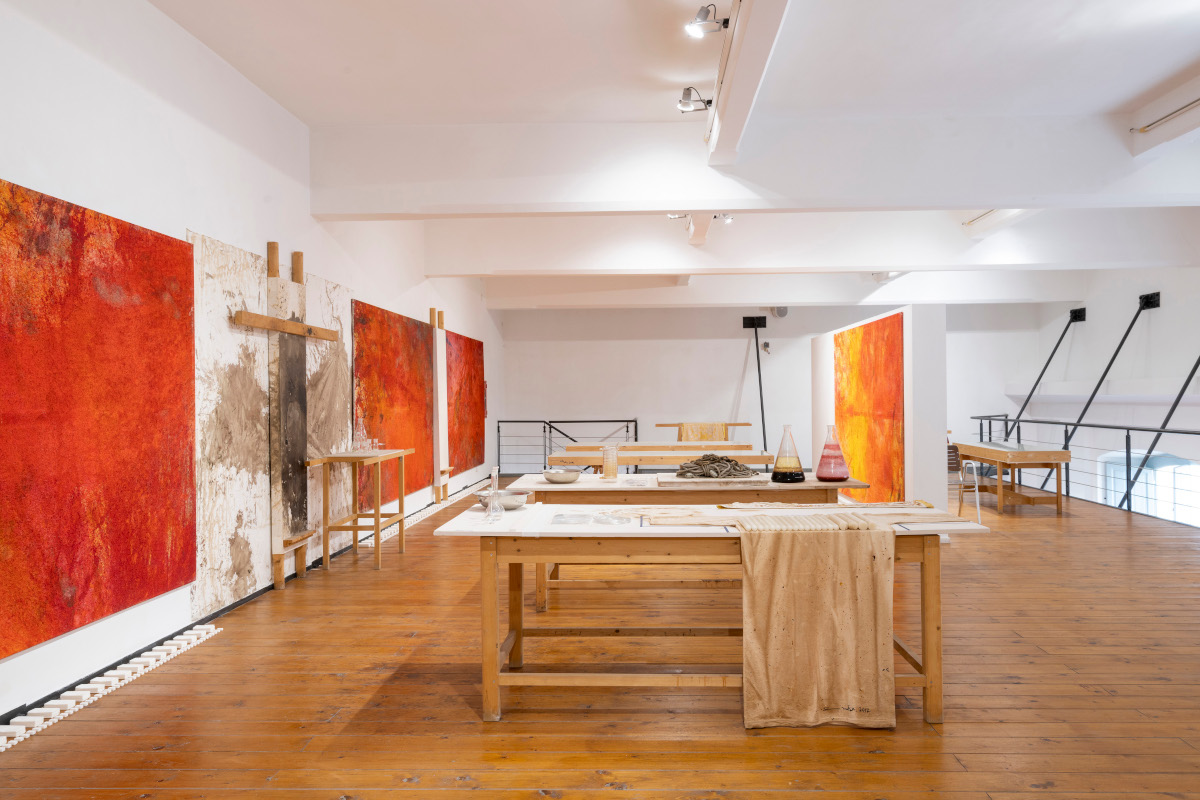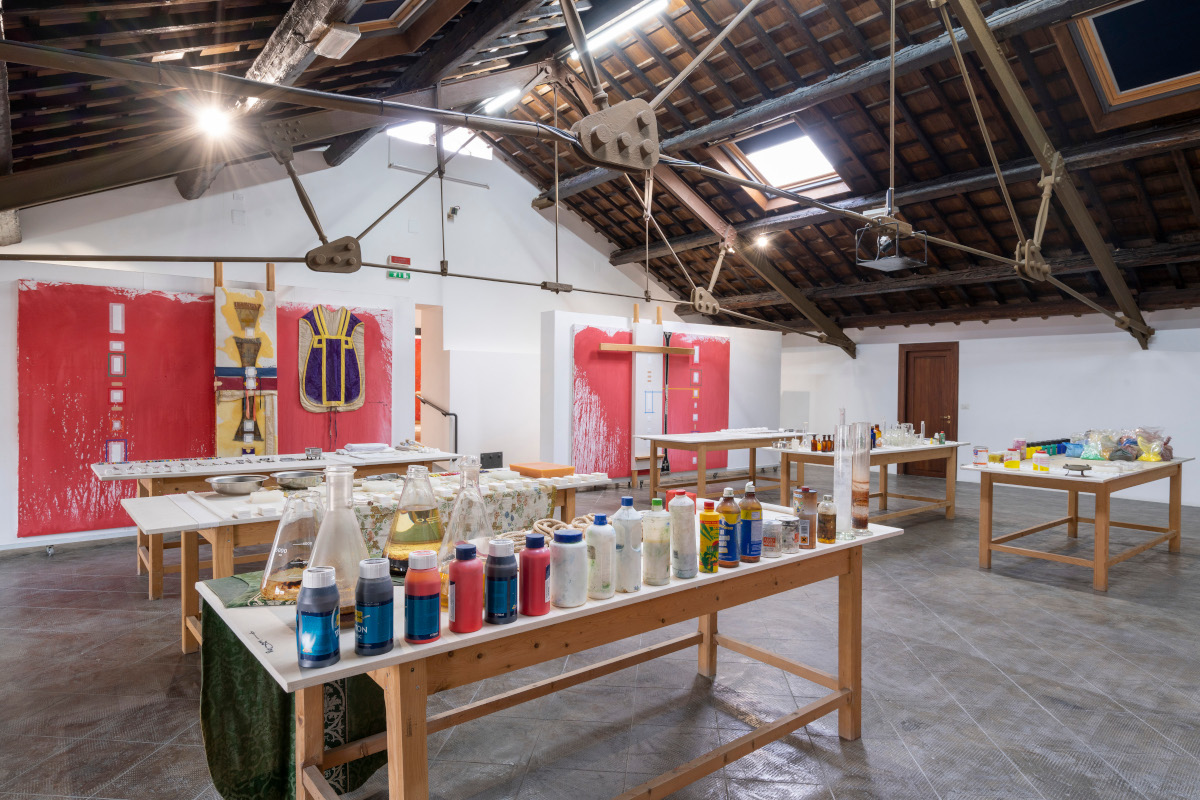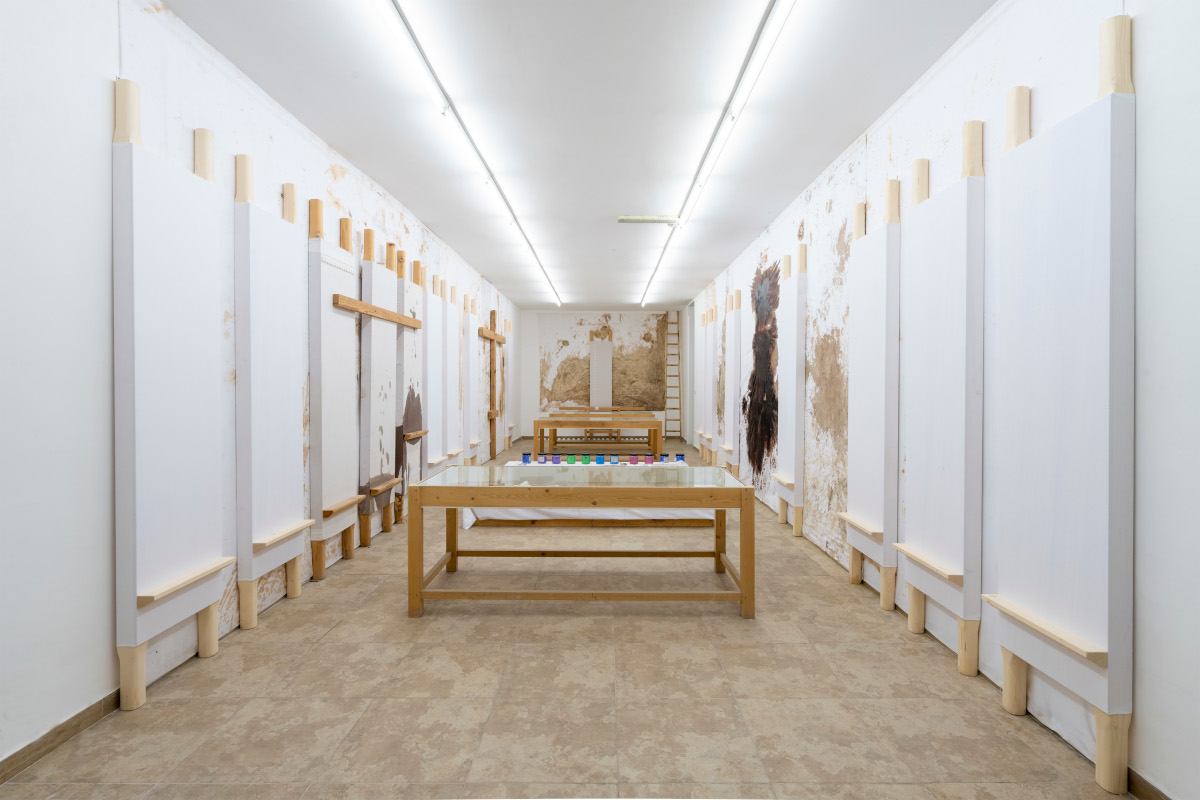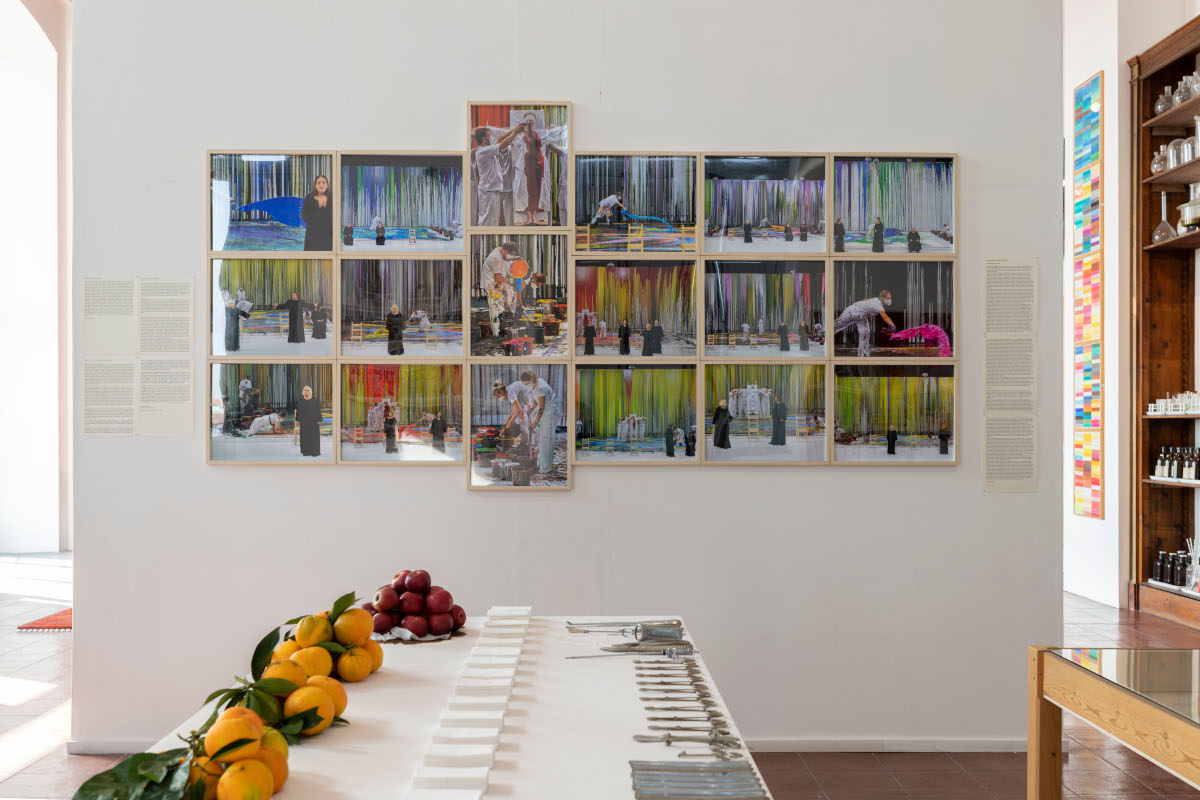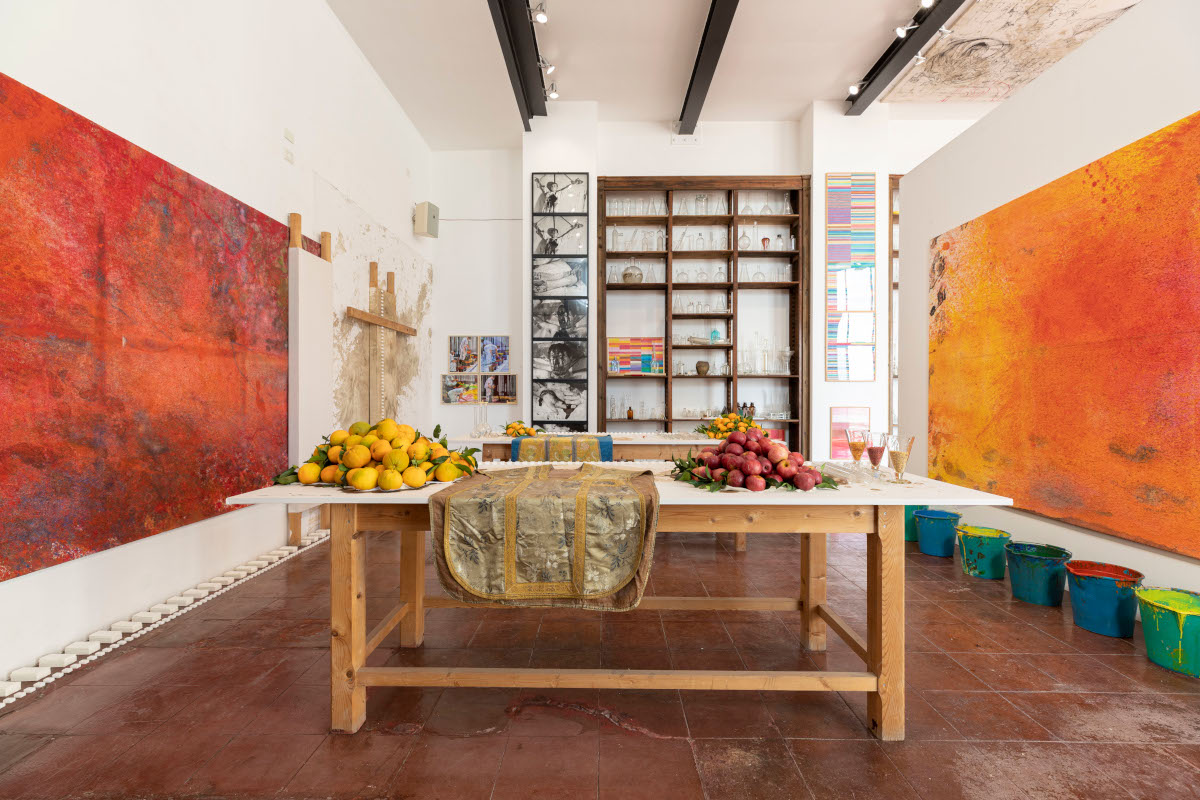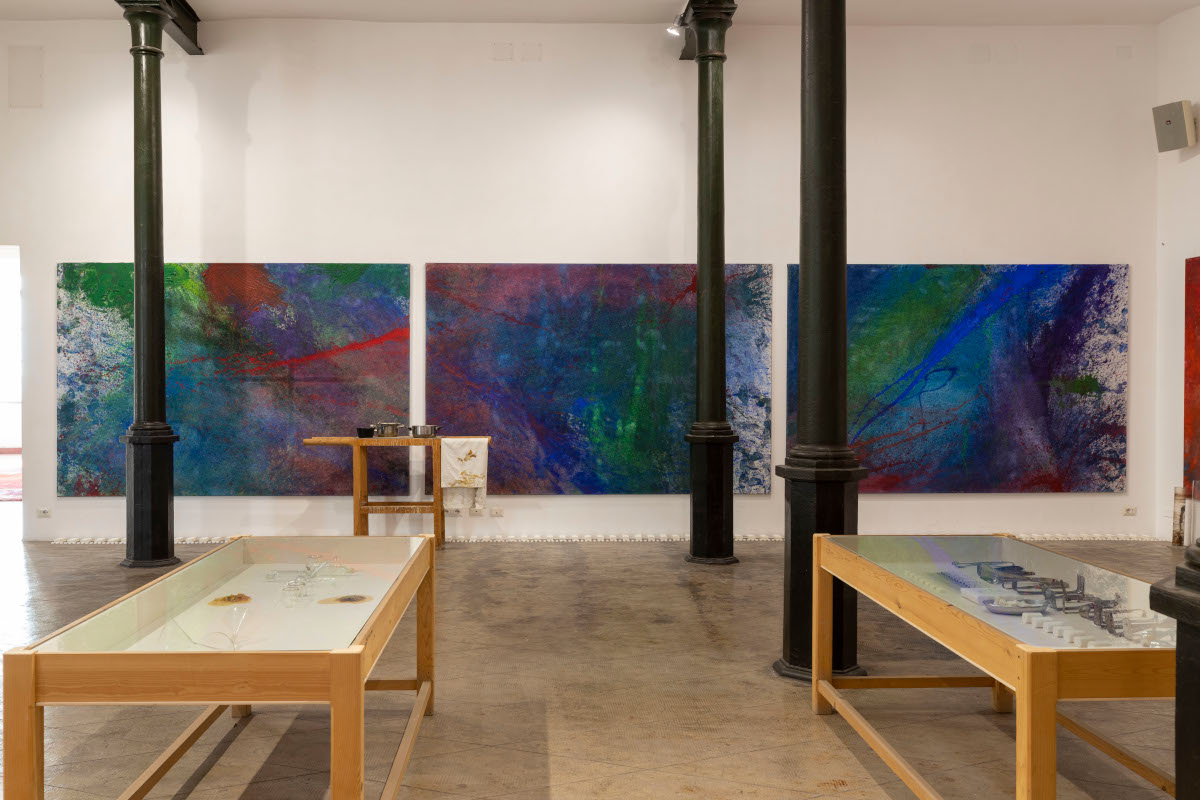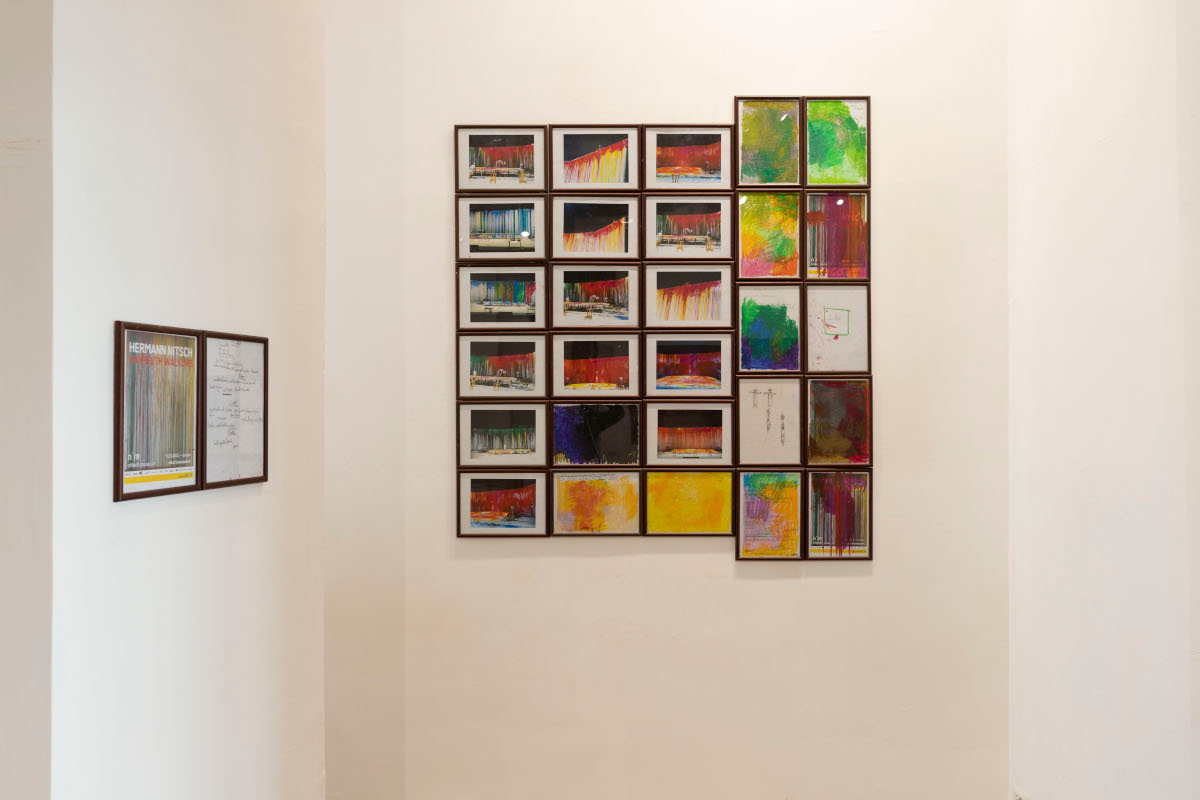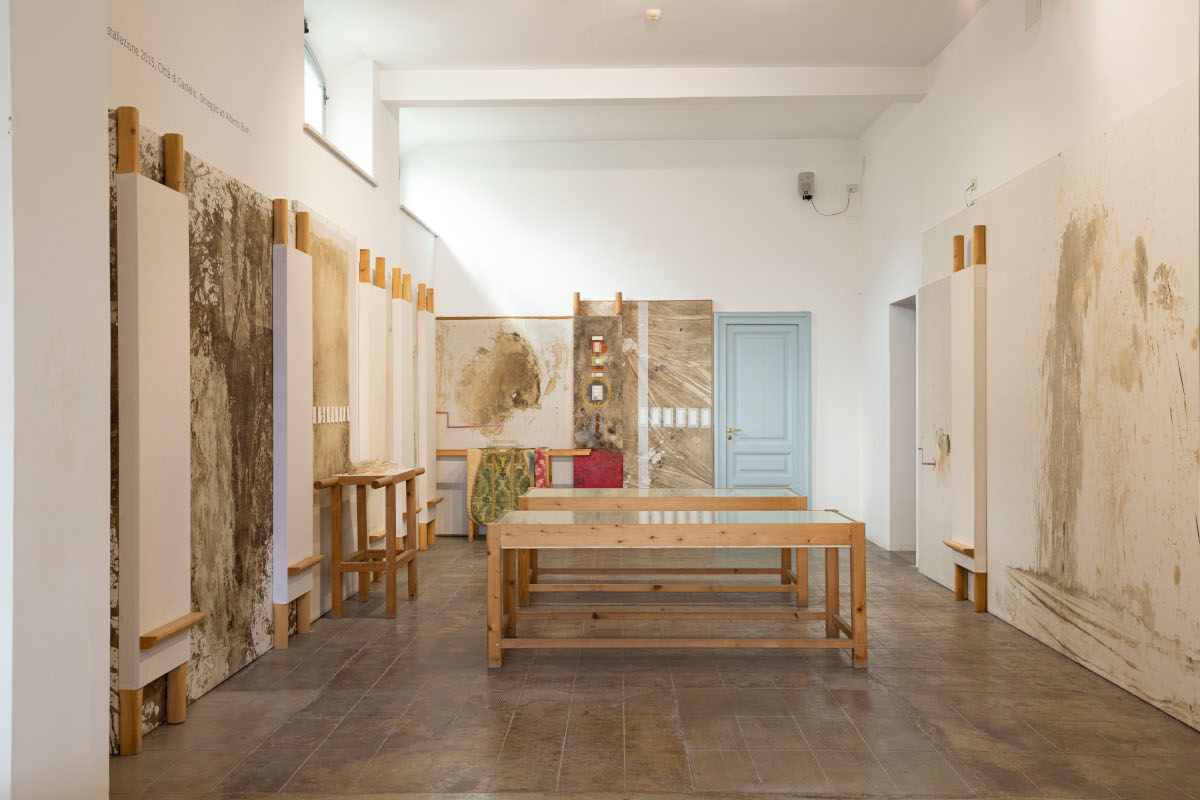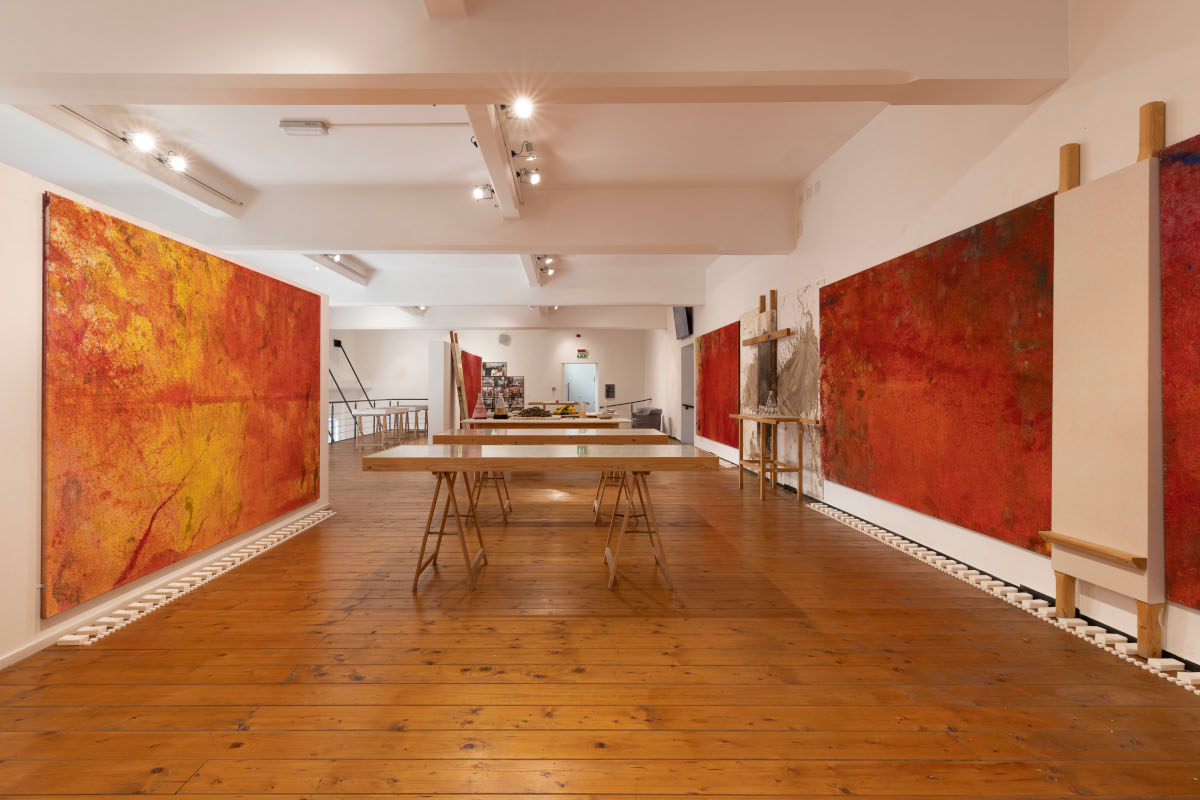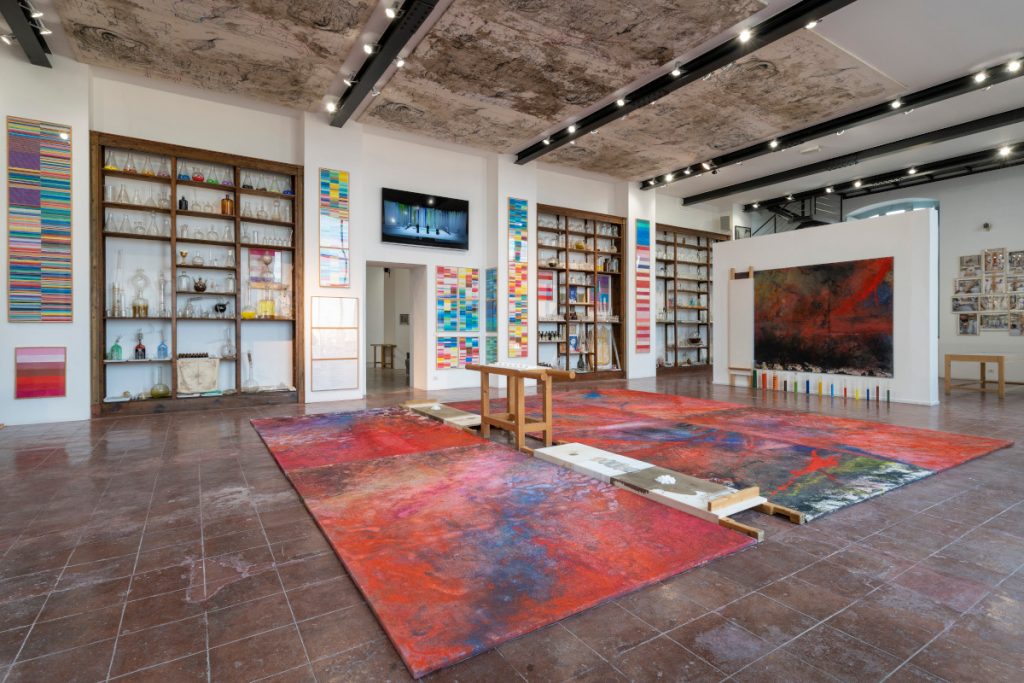
2022-2024 | Bayreuth Walkure and 158.aktion
BAYREUTH WALKÜRE and 158.aktion RELICTS curated by Giuseppe Morra and Lorenzo Mango exhibition 2022-2024
malaktion walküre july-august 2021 bayreuther festspiele, bayreuth
158.aktion 18.09.2020 museo nitsch naples
lehraktion 15.09.2018 ten years museo nitsch naples
152.aktion 8.10.2017 casa morra archivi d’arte contemporanea naples
77.malaktion 8.10.2017, casa morra archivi d’arte contemporanea naples
2015 homage to Alberto Burri fondazione palazzo albizzini città di castello
135.aktion 14.05.2012 dionysos versus the crucified (part 1) istituto superior de arte 11.biennale havana cuba
54.malaktion august 2008 museo nitsch naples
aktion 24-27.1.1988 schloss prinzendorf
preparatory drawings for malaktion walküre 2021
die eroberung von jerusalem (the conquest of jerusalem) 1971/2008
das letzte abendmahl (the last supper) 1983/2015
könig ödipus (oedipus king) 1981/2017
olfactory, gustatory, and colour laboratory 2008
color theory of the o. m. theater 2008
photographs malaktion walküre 2021 bayreuther festspiele, bayreuth
photographs 152.aktion 8.10.2017 casa morra archivi d’arte contemporanea, naples
photographs 130.aktion 23.05.2010 pfingstfest – feast of pentecost museo nitsch and vigna san martino, naples
photographs satyagraha october 2001 festspielhaus, st. pölten
photographs aktions 1962-1966
staircase vico II avvocata
The exhibition BAYREUTH WALKÜRE and RELICTS 158.aktion, in conjunction with the Nitsch Museum in Mistelbach, the Nitsch Foundation, and with the support of the Goethe-Institut Neapel, offers to its audience a hitherto unseen connection between a wide selection of paintings from the malaktion walküre and the relicts of 158.aktion, the last action directed by the Austrian artist in Napoli.
The first set of works comes from the impressive pictorial actions created by Hermann Nitsch as performative events at the concert of Richard Wagner’s The Valkyrie during the Bayreuth Festival in the summer of 2021.
“… without competing with wagner, i would like to show the continuation of his work in the direction of orgies mysteries theatre. my actionist performance theatre wants to sensitise the gesamtkunstwerk even more. the impressions of all five senses are mixed. the real act of the festival is the goal. in this case through a dionysian, orgiastic acting out by a painting action, which is not to illustrate wagner, nor is it to be used as a backdrop, nor is it to be used for wagner as a backdrop. an intense event is to be coupled with another intense event.” (Hermann Nitsch, malaktion and richard wagner)
Nitsch does not merely ‘set the stage for’ The Valkyrie, rather, he sets in motion, as the action unfolds, a process of intensification and expansion of the sensory experience that lies at the heart of the Orgies Mysteries Theater. The Bayreuth experience is also reproduced through the video projections, photographs, and a selection of Nitsch’s drawings.
Lorenzo Mango writes: “The total work of art in Nitsch’s interpretation is redolent of Wagner’s memory but goes beyond it. In the Orgies Mysteries Theatre, it is determined by experience, contact with the vital in its most absolute and primal form, the senses, and the sensuality of theatre.”
“… i wish to put on a painting action where the colours of the poured and smeared paint, spanning the whole spectrum of the rainbow, attempt to compete in a positive sense with the blazing colouration of wagnerian music. the painting actions are precursors to my own orgies mysteries theatre i have developed in prinzendorf. i’ll be absolutely delighted if in the three acts glowing colours stream down uninterrupted from up above. the events of the actual act of painting are to be like music. sounds turn into colours.” (Hermann Nitsch, on the painting action WALKÜRE)
In connection with the large paintings, the relics and documents from the 158.aktion – the last one to be led by Nitsch are on show to the public. In this action, the Austrian Master acknowledged the primary importance in terms of dynamism and intensity of the “sinfonia napoli” – an integral part of the event, performed by the Orchestra Scarlatti under the baton of Andrea Cusumano – through which, in September 2020, he wished to celebrate both Giuseppe Morra and the city of Naples, on the occasion of the twelfth anniversary of his Neapolitan Museum-Laboratory.

